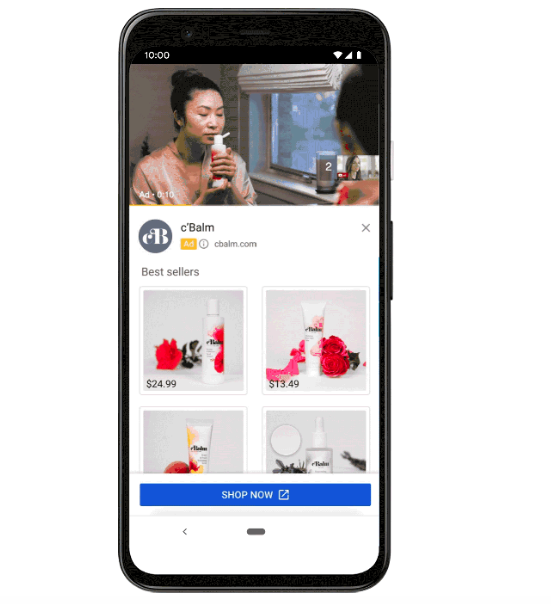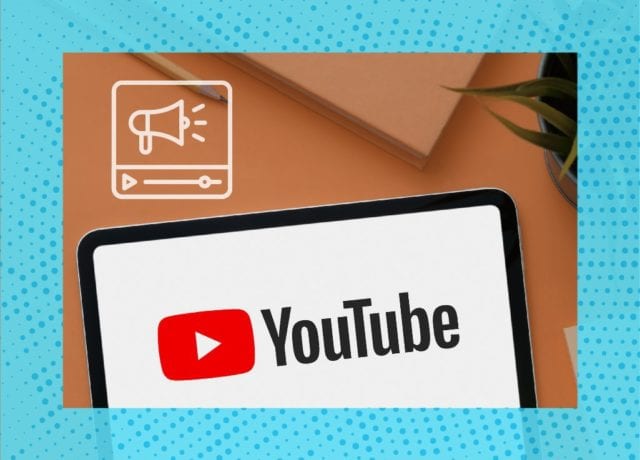COVID-19 has accelerated the growth of eCommerce, with no sign of reversal since the reopening of brick-and-mortar stores.
Due to this trend, publishers have pushed direct-response advertisements and sought to make shoppable ads a reality.
Consequently, YouTube has taken direct-response to the next level.
“Today, we’re making it even easier for you to inspire people to take action on YouTube,” announced Director of Product Management of YouTube Ads Nicky Rettke. “With smarter solutions that make video more shoppable, use automation to drive conversions, and help you better understand attribution.”
YouTube isn’t the only contender in the shoppable ad space, so we’ll give you a breakdown of the latest update and how it fits in the overall landscape of shoppable ads.
We encourage you to subscribe to our blog for the latest data surrounding the advertising industry. We will provide daily updates as COVID-19 continues to make its mark on the US economy.

What are YouTube’s New Direct Response Advertisements?
YouTube’s new shoppable ad formats allow brands to place product placements below a video ad.

This allows brands to use their video advertisements as a storefront that connects to the advertiser’s page.
YouTube explains that it’s simple to set up this new shopping channel. Brands need to sync their Google Merchant Center feed to their video ads. From there, they can choose the products they want to feature and visually expand the call-to-action button to drive conversions.
In addition to shopping features, YouTube released a new form tool that can be used in sync with video campaigns for lead generation. Forms can be placed below videos, without interrupting the video, to capture qualified leads.
On top of these two new features, YouTube will be added to Google Ads attribution reports, giving brands more insight into their video campaign performance and overall mix of marketing efforts.
Which brands are already using these shoppable YouTube ads?
Aeri was one of the first brands to use this new tool. It set out to boost its brand love and omnichannel sales.
According to YouTube, Aerie saw increased engagement with the advertisements and gained a 25% higher return on ad spend than the previous year. The brand also achieved nine times more conversions compared to their traditional media mix.
Jeep was another forerunner in using the new tools, taking advantage of the lead generation forms. Jeep produced a high quality video campaign targeting audiences in Korea. With the lead capture form, Jeep generated “the most leads at the most efficient cost among all ad platforms,” says Kenny Hwang, Jeep’s Korea Marketing Manager.
Moz, a startup that helps students find college funding, was another client in the testing phase. With the new tool, “it saw 30% more purchases for its service at a third of the cost, compared to its previous YouTube benchmarks,” according to TechCrunch.
Where do YouTube’s shoppable ads fit in the shoppable ad tech environment?
When it comes to shopping directly on social media, Facebook and Instagram are already playing in this space.
Instagram began testing the ability to run organic shopping posts as shopping ads last September. In May 2020, Facebook and Instagram announced that shoppers could buy products directly from a business’s Facebook page or Instagram account.
Snapchat also expanded its dynamic ad products for eCommerce brands this month.
When it comes to streaming, Hulu and NBCU’s Peacock offer shoppable ads, where viewers can use their remote control to make purchases.
While YouTube wasn’t the first company to make social media a storefront, it is a huge contender. It is the world’s second largest search engine, with over 2 billion users.
Its new features make it a social media platform, search engine and storefront that are hard to compete with.
For more updates like this, stay tuned. Subscribe to our blog for more updates on coronavirus and its mark on the economy.



